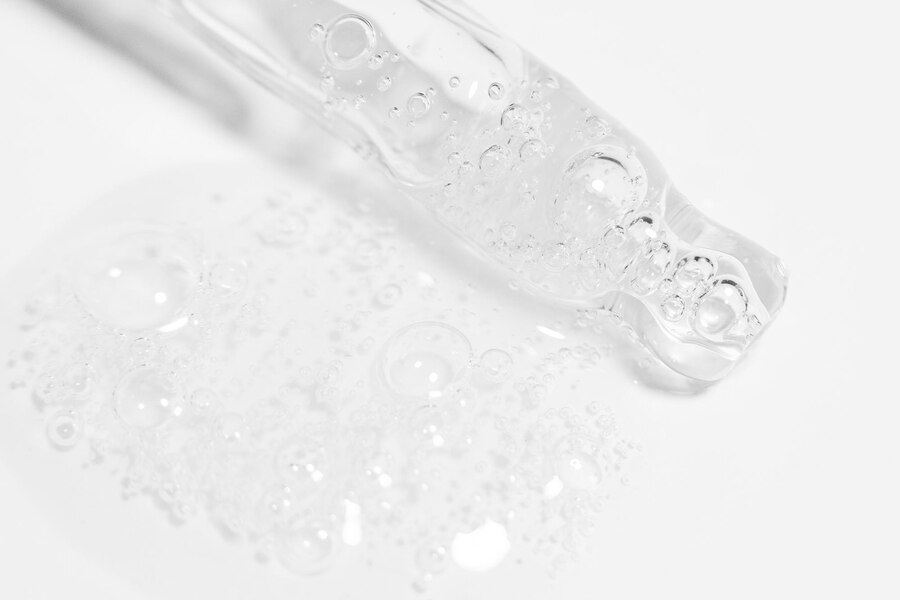Introduction to the Ingredient
Disodium EDTA, is a chelating agent commonly used in skincare formulations. While its name may sound intimidating, Disodium EDTA plays a crucial role in skincare by improving product stability and enhancing efficacy. Let’s delve deeper into its benefits, usage, and safety considerations in skincare.
EDTA, or ethylenediaminetetraacetic acid, may sound like a mouthful, but it’s a common player in skincare and body care products. You’ll often find EDTA listed on the labels of your favorite cleansers, soaps, and body washes. But what exactly does it do?
EDTA comes in two primary forms: Tetrasodium EDTA and Disodium EDTA. While their structures and pH levels may vary slightly, they serve similar purposes in cosmetics and personal care products.
So, why is EDTA a staple in hair and skincare products? For starters, it acts as a preservative, keeping harmful bacteria, yeasts, and molds at bay. While preservatives often get a bad rap, they’re essential for extending product shelf life and preventing contamination. Synthetic preservatives like EDTA also tend to be gentler on the skin and less likely to interfere with other ingredients.
But EDTA isn’t just about preservation—it’s also a foaming agent, enhancing the lather and bubbles in your favorite cleansers and soaps. Its versatility makes it a go-to ingredient for brands across the spectrum, including natural formulations that prioritize efficacy.
Now, let’s break down the nitty-gritty of EDTA:
The Good: EDTA serves as a preservative, safeguarding skincare products against mold, bacteria, and yeast. It also enhances foaming and lathering properties.
The Not So Good: While generally safe, EDTA may cause mild irritation in some individuals.
Who Is It For? Suitable for all skin types, except those with known allergies to EDTA.
Synergistic Ingredients: EDTA plays well with most other skincare ingredients.
Watch Out For: Keep an eye on the two primary forms of EDTA used in skincare formulations: Disodium EDTA and Tetrasodium EDTA.
How Does it Work?
Disodium EDTA functions as a chelating agent, meaning it binds to metal ions present in water, cosmetics, and the skin. By chelating these metal ions, Disodium EDTA helps prevent product degradation, oxidation, and rancidity. Additionally, it aids in the removal of heavy metals and impurities from the skin’s surface, improving overall product performance and skin health.
Key Benefits
- Stability: Disodium EDTA helps maintain the stability and shelf life of skincare products by preventing oxidation and microbial growth.
- Efficacy: By chelating metal ions, Disodium EDTA enhances the efficacy of other active ingredients in skincare formulations, ensuring they remain potent and effective.
- Cleansing: Disodium EDTA facilitates the removal of heavy metals and impurities from the skin, making it a valuable ingredient in cleansing and detoxifying products.
Usage in Beauty Products
Disodium EDTA is a versatile ingredient found in a wide range of beauty products, including cleansers, toners, serums, creams, and sunscreens. It is often included in formulations containing active ingredients prone to oxidation or degradation, such as vitamin C, alpha hydroxy acids (AHAs), and botanical extracts. Disodium EDTA is typically used at low concentrations to achieve its chelating effects without causing irritation or sensitivity.
Safety and Precautions
While concerns about EDTA’s safety have surfaced, regulatory bodies like the US FDA and Cosmetic Ingredient Review Expert Panel have deemed it safe for skincare use. While some studies suggest potential reproductive toxicity and irritation at high concentrations, these findings don’t align with typical skincare usage. Disodium EDTA is considered safe for topical use in skincare products when used as directed. It is non-toxic and non-irritating at typical concentrations found in cosmetics. However, individuals with sensitive skin or allergies should be cautious when using products containing Disodium EDTA and perform a patch test if necessary. While Disodium EDTA helps remove heavy metals from the skin, excessive use may disrupt the skin’s natural microbiome and lead to dryness or irritation.
Compatibility with Other Ingredients
Disodium EDTA is compatible with most skincare ingredients and formulations. It works synergistically with antioxidants, preservatives, and active ingredients to enhance product stability and efficacy. However, it’s essential to consider pH levels and other formulation factors when incorporating Disodium EDTA into skincare products to ensure optimal performance and compatibility. The distinction between Tetrasodium EDTA and Disodium EDTA lies in their ideal pH ranges. Tetrasodium EDTA thrives in alkaline conditions, while Disodium EDTA prefers a slightly acidic environment. However, this difference doesn’t significantly impact their efficacy in skincare formulations.
Scientific and Research Findings
Research on the skincare benefits of Disodium EDTA primarily focuses on its role as a chelating agent and its effects on product stability and efficacy. While limited studies directly investigate its impact on skin health, Disodium EDTA’s ability to remove heavy metals and impurities from the skin’s surface may contribute to overall skin cleanliness and health.
Common Variants or Derivatives
Disodium EDTA is the most common form of EDTA used in skincare formulations. However, other derivatives, such as tetrasodium EDTA and trisodium EDTA, may also be used depending on the specific formulation requirements and desired effects.
Considerations When Using the Product
- Patch Test: Perform a patch test before using skincare products containing Disodium EDTA, especially if you have sensitive skin or allergies.
- Follow Instructions: Use skincare products containing Disodium EDTA as directed, and avoid excessive or prolonged use to prevent potential skin irritation.
- Consult a Dermatologist: If you have concerns about using products containing Disodium EDTA or experience any adverse reactions, consult a dermatologist for personalized advice and recommendations.
References
- Hopp, D. “The role of chelating agents in cosmetics and personal care products.” Dermatologic Therapy, vol. 22, Suppl. 1, 2009, pp. S26-S34.
- Zareba, M., et al. “Ethylenediaminetetraacetic acid prolongs the stability and enhances the antioxidative properties of commercially available hyaluronic acid-containing antiaging preparations.” Dermatology and Therapy, vol. 9, no. 4, 2019, pp. 731-740.
Conclusion
Disodium EDTA, with its chelating properties, plays a vital role in skincare formulations, contributing to product stability, efficacy, and cleanliness. While further research is needed to explore its direct effects on skin health, Disodium EDTA remains a safe and effective ingredient used by formulators to enhance the performance of skincare products. By understanding its functions and following proper usage guidelines, consumers can confidently incorporate Disodium EDTA into their skincare routines to achieve healthy, radiant skin.
Frequently Asked Questions (FAQs)
Is Disodium EDTA safe for sensitive skin? Disodium EDTA is generally considered safe for topical use.
Why is EDTA so widely used? As a water-soluble chelator, EDTA binds to mineral ions, deactivating them and improving product efficacy in water-rich environments. By preventing the formation of biofilms, EDTA inhibits bacterial growth, maintaining product integrity.
In summary, EDTA may be a tongue-twister, the next time you reach for your cleanser or serum, remember to thank EDTA for keeping your skincare routine fresh and effective.



